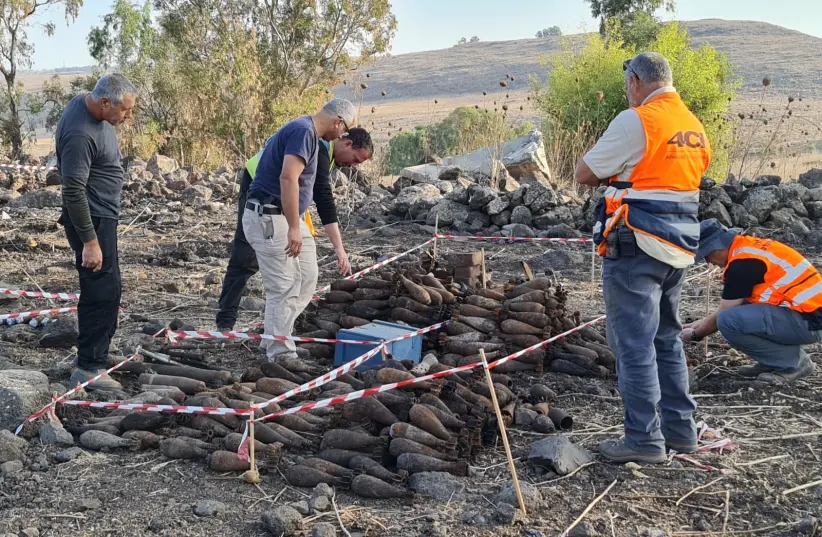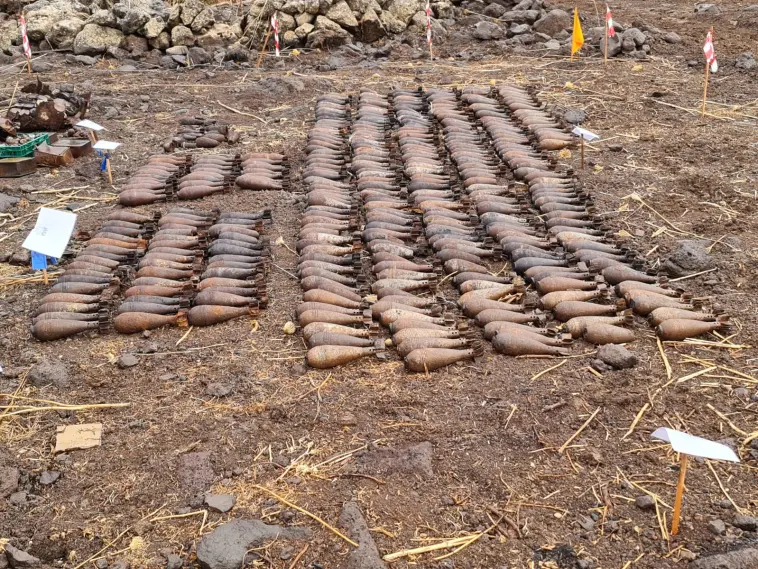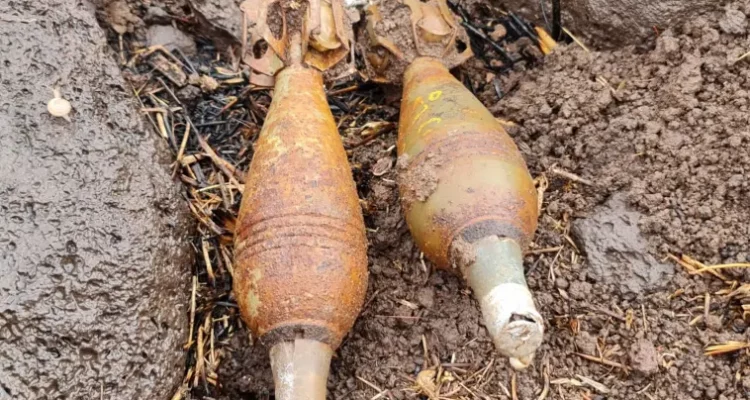The ammunition was collected and transported under strict safety rules for storage prior to its destruction.
By Tobias Siegal, World Israel News
The Defense Ministry’s National Mine Action Authority has uncovered a huge Syrian bunker full of ammunition dating back to the 1967 Six Day War.
The bunker was unearthed at the Gadot observatory in the Golan Heights, where the Syrian army had erected one of its most fortified military outposts in the Golan prior to 1967. Syrian soldiers positioned there would regularly fire toward Israeli towns and farmers working in the Hula Valley below.

Ammunition found in the Syrian bunker in the Golan Heights. November, 2021. (Photo: Defense Ministry)
The fields surrounding the outpost, which today serves as a memorial site for the IDF’s Alexandroni Brigade, are full of land-minds to this day. In an attempt to make the site safer for the many tourists who visit the site every year, the National Mine Action Authority has recently begun the tedious work of clearing thousands of mines still buried in the area.
While doing so, sappers working in the fields made an unexpected discovery – an old Syrian bunker full of hundreds of items used during the war, including mortar bombs of various calibers, fuses, pyrotechnic armaments, explosives, and shotgun bullets, all in their original packaging.
The ammunition was collected and transported under strict safety rules for storage prior to its destruction.

Ammunition found in the Syrian bunker in the Golan Heights. November 2, 2021. (Photo: Defense Ministry)
Israel’s Mine Action Authority, which has been operating since 2012, is responsible for clearing minefields that are no longer necessary to maintain state security. Since its inception, the authority has cleared about 15,000 dunams of minefields. Over the past year, the Authority has operated at a number of sites throughout the country, including the Golan Heights, the Jordan Valley and the northern Negev.
And while the discovery of such a large bunker with previously untouched ammunition is considered rare, similar findings have been made before.
Last year, Israeli archeologists working at the site of the Western Wall in Jerusalem, discovered at the bottom of a water cistern a stash of ammunition and weapons used by the Jordanian army during the Six Day War. The stash included 10 Bren light machine gun magazines, bayonets, and parts of a British Lee Enfield rifle.
______
TPS contributed to this report.




